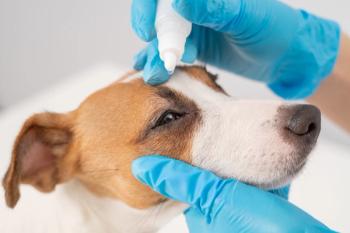
Monitoring the Outbreak: Asian Influenza A Virus in China
In light of multiple recent human cases of Asian H7N9 bird flu in China, the country is taking measures to prevent further spread of the virus.
Last month, the National Health and Family Planning Commission of China notified the World Health Organization (WHO) about 14 laboratory-confirmed cases of human infection with an Asian lineage avian influenza A (Asian H7N9) virus in mainland China. Cases reported since October 2016 are considered part of the fifth epidemic wave of Asian H7N9, the largest annual epidemic to date.
Onset dates in the most recent outbreak ranged from March 14 to April 4, 2017, with cases reported in 10 provinces throughout China (including a cluster of 3 cases in Beijing). Patient age ranged from 38 to 70 years, with 4 cases in women.
At the time of notification, 1 death had occurred and 13 patients were diagnosed as having either pneumonia (5 cases) or severe pneumonia (8 cases). Thirteen of the 14 patients reportedly had exposure to live poultry or a live poultry market prior to infection; 1 did not.
Since early 2013, a total of 1378 laboratory-confirmed human infections with Asian H7N9 virus have been reported through International Health Regulations notification.
Preventive Measures
Considering the increase in the number of human cases since December 2016, the Chinese government is taking preventive action at national and local levels by:
- Continuing to strengthen control measures, particularly regarding hygienic management of live poultry markets and cross-regional transportation
- Requesting that all provinces remain vigilant and offering and implement full prevention and control measures
- Offering guidance to epidemic areas on strengthening control and prevention, and providing the public with guidance on self-protection
- Strengthening trace-back investigations and etiology surveillance to define the scope of virus contamination and mutations
WHO Guidance
In most cases of Asian H7N9, the person was exposed to the virus through contact with infected poultry or contaminated environments, including live poultry markets. The virus continues to be detected in animals and environments, and live poultry vending continues, so more reports of human cases can be expected. Despite reports of small clusters of human cases of Asian H7N9 virus infection, including those involving patients in the same hospital ward, current evidence suggests that this virus has not acquired the ability of sustained transmission among humans. Therefore, the likelihood of further community level spread is considered low.
WHO advises travelers to countries with known outbreaks of avian influenza to avoid poultry farms, live poultry markets, areas where poultry may be slaughtered, or any surfaces that appear to be contaminated with feces from poultry or other animals. Travelers should also practice proper hand hygiene and follow good food safety and food hygiene practices.
At this time, WHO is not recommending any travel or trade restrictions. As always, a diagnosis of infection with an avian influenza virus should be considered in individuals who develop severe acute respiratory symptoms while traveling in or soon after returning from an area where avian influenza is a concern.
Newsletter
From exam room tips to practice management insights, get trusted veterinary news delivered straight to your inbox—subscribe to dvm360.




